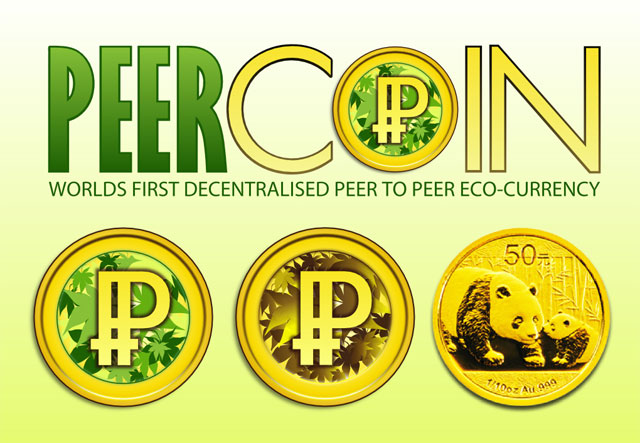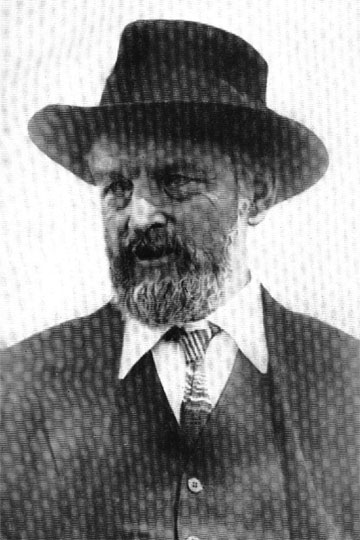PPCoin (PPC)
Site: http://www.ppcoin.org/
Launch date: August 12, 2012
Number of PPCoins circulation: Unknown
Eventual PPCoin total: No cap
Market cap: Unknown

Peer-to-Peer Coin, or PPCoin for short, presents itself as an improvement upon Bitcoin by changing one of the latter's fundamental ideas: proof-of-work.
In Bitcoin, as with all these coins, the supply of coins is stable and predetermined, and the rate at which they are generated decreases exponentially. The cost of mining has now risen such that people can't really use their home tablets, laptops, or desktops. Instead, they have to rely on application-specific integrated circuit (ASIC) mining—expensive, dedicated rigs that often cost thousands of dollars, running 24/7, just generating enough bitcoins to make the whole thing cost-effective.Beyond improving security—it’s a lot harder to steal PPCoin than Bitcoin this way—it reduces the chance of a 51 percent attack by making the counterfeiting of coins extremely difficult.
Some worry that this could lead to a security issue in the future. Harder mining means fewer people bother to dedicate the effort and time, and fewer miners means that the overall network of nodes decreases. It's possible that the number could decline to such an extent that Bitcoin, as massive as it may become, could be open to a 51 percent attack on the blockchain.
The determining factor in which blockchain becomes the "real" one and which is discarded comes down to a simple rule—whichever blockchain is the one accepted by the most number of mining nodes becomes the canonical one. In a 51 percent attack, someone takes over enough nodes to effectively dictate that their own version of the blockchain is accepted over the legitimate one. If that happens, it becomes possible to counterfeit bitcoins or (even worse) to spend them more than once. It's a serious threat—lots of currencies have been taken down before they've even had a chance to stand on their own feet in this way.
PPCoin's solution to this is to slightly alter what the blockchain records. In Bitcoin, a "proof-of-work" is attached to each block as it's generated. It verifies the ownership of the block by the person who mined it, and future transactions use it as an identifying marker. In PPCoin, a further piece of information is included—"proof-of-stake."
Think of it this way. If you've had a single proof-of-work in your wallet for one day—you could say that you have one coin-day in your wallet. One coin in your wallet for a week gives you seven coin-days; three coins in your wallet for 18 days gives 54 coin-days. It's simply the number of coins multiplied by the time held, which is determined by the addition of a time stamp to the coin's information. It gives someone not just a proof-of-work, but a proof-of-stake.
Beyond improving security—it's a lot harder to steal PPCoin than Bitcoin this way—it reduces the chance of a 51 percent attack by making the counterfeiting of coins extremely difficult. You have to gain 51 percent of all proofs-of-stake instead of mining power.
Another radical difference is that, unlike with Bitcoin, there is no final cap set on the number of PPCoins that will be generated. Instead, the combination of proof-of-work mining (as with Bitcoin) and proof-of-stake mining (which comes from using coins for transactions) gives the currency a steady growth in size that, its developers claim, equals roughly one percent per year.
As proof-of-work mining becomes more difficult and the number of miners drops off, it's expected that proof-of-stake mining will become the dominant form of mining in PPCoin, increasing the supply of coin-days rather than coins that can be spent.
Currently, PPCoin has a centralized checking system in place to verify transactions, so it doesn't qualify as decentralized in the same way that Bitcoin does. This is, the PPCoin developers have said, only a temporary measure required until "the network matures."
BTC-e and Cryptonit are two of the main exchanges that accept PPCoin. Its current value is around 0.002 BTC ($0.15) per PPCoin.
Freicoin (FRC)
Site: http://freico.in/
Launch date: December 17, 2012
Number of freicoins in circulation: Unknown
Eventual freicoin total: 100 million
Market cap: Unknown

Freicoin is an interesting alternative—with a distinctive philosophical framework—to other cryptocurrencies. It has a demurrage fee built into the system.
"Demurrage" isn't something we usually associate with money. It usually means the cost of holding something for a long time, like the price for the storage of gold. In this context, though, it's a deliberate tax on savings. Think of it as inflation controlled through taxes on a stable money supply rather than an untaxed money supply that expands slowly but steadily, as we're perhaps used to with normal currencies.
Freicoin developer Mark Friedenbach told Wired.co.uk through e-mail what this means: "[Demurrage] can be thought of as causing freicoins to rot, reducing them in value by ~4.9 percent per year. Now to answer the question as to why anybody would want that, you have to look at the economy as a whole. Demurrage causes consumers and merchants both to spend or invest coins they don't immediately need, as quickly as possible, driving up GDP. Further, this effect is continuous with little seasonal adjustments, so one can expect business cycles to be smaller in magnitude and duration. With demurrage, one saves money by making safe investments rather than letting money sit under the mattress."
If you look at the problem with Bitcoin's bubble, it's easy to see why this kind of thing would be attractive for someone wanting a currency with a stable, predictable value. Many pundits have argued that Bitcoin will always have a deeply unstable price as the money supply is limited and grows slower every minute—if you're holding bitcoins, and you know that they'll be worth more in a week than right now, your incentive is to hold on to your money instead of spending it. Nobody buys anything, and the Bitcoin economy slows to a halt.
Demurrage compensates for this deflation—you would be a fool to store large sums of money in Freicoin according to Friedenbach. "Demurrage eliminates what is called 'time-value preference'—the unsustainable nature of our culture to want things now rather than in the future, or at least spread out over time, such as the clear cutting of forests versus sustainable harvesting. Demurrage acts to lessen the desires of the present in order to meet the needs of the future as money is 'worth more' the longer you delay in receiving it. This leads to sustainable economic choices."
He cites real-world examples of demurrage fees, such as the "Miracle of Wörgl." The proposal to use demurrage deliberately, as a way to force the circulation of money and stimulate the economy, was first proposed by economist and anarchist Silvio Gesell. The mayor of the Austrian town of Wörgl instigated scraps of paper known as "Freigeld" with demurrage in 1932 during the Great Depression. The experiment led to a rise in employment and the local GDP until it was stopped by the Austrian central bank in 1933.
Beyond demurrage, Freicoin works pretty much the same as the basic Bitcoin framework—new blocks roughly every 10 minutes, with the same difficulty and hashing algorithm. The final total of coins will be greater, however, at 100 million.
Freicoin's developers are also pushing for new features for their cryptocurrency to mark it out as different from the others, Friedenbach said. "We have created the Freicoin Foundation which is a registered non-profit responsible for distributing 80 percent of the initial coins to charitable or mutually beneficial projects. We are making a variety of technical improvements to the Bitcoin protocol, which may eventually find their way upstream."
"We are also working on new features that are probably too controversial to be worked into Bitcoin presently, such as the addition of 'Freicoin Assets,' a mechanism for issuing your own tokens for whatever purpose (stocks, bonds, lines of credit, etc.) and trading these tokens on a peer-to-peer exchange. We are also planning to extend Freicoin to include a variety of voting mechanisms in a proposal for distributed governance we are calling 'Republicoin.'"
Freicoin's radical demurrage concept has marked it out for a lot of criticism, unsurprisingly. You can see on the developer's forum the number of discussions taking place about it (and at least one group has tried to take over Freicoin with their own new fork, removing the 80 percent Freicoin Foundation subsidy). After all, while Bitcoin might be unstable because of price speculation and deflation, that same increase in value is what drew attention, and therefore users, to Bitcoin first.
The demurrage fee, taken from every transaction, is redistributed mainly to miners of new blocks. The Freicoin Foundation that Friedenbach mentioned is controversial because for the first three years, 80 percent of the demurrage fees will be siphoned off to this central fund to be sent forward to other people or organizations in a bid to get the currency traction outside its small community.
However, this central fund goes against what many regard as the key point of cryptocurrencies—nobody is in control and they are completely decentralized. Assurances that the Foundation will be "democratic" and open for any Freicoin user to join and vote on the use of funds may not reassure some people.
Freicoin is currently traded on Vircurex and Bter. The price per freicoin price is roughly 0.0006 BTC ($0.06).
Others
There have already been several cryptocurrencies that have been born, lived stuttering lives, and died because they offer nothing substantial beyond Bitcoin. Their names—SolidCoin, BBQCoin, Fairbrix, and GeistGeld, to name some—are now footnotes on the Bitcoin wiki. Their networks are ghosts with nodes that flicker on and off only intermittently.
Several of them were taken down by 51 percent attacks, while others simply never enjoyed support from a large enough community. The balance between commodity speculation to drive price and merchants to drive transactions is a hard one to build.
Legitimate currencies that are still working, and which have fans and active support communities, include Namecoin, Terracoin, and Feathercoin. However, cryptocurrencies are fast-moving and unpredictable in the long term—it's hard to state with confidence that any one currency, including Bitcoin itself, will be here next year or even next week. Their instability and their unpredictability is part of the design.
By all means, if you have the money, invest in something intangible like an algorithm in the hope that it will become a viable payment method. Just be aware that it's a risky way to try to make money—you might be better off sticking to the stock market.
This story originally appeared on Wired UK.
You must login or create an account to comment.